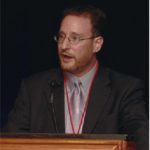 This four-part article explores the nature of truth through the prism of quality, mass media, culture, and art. In part one, we posed the question of why truth matters, and considered how the quality professional’s toolkit can help mine mountains of data to uncover hidden nuggets of meaningful information. Here, in part two, we delve into how media helps and hurts in the quest for truth.
This four-part article explores the nature of truth through the prism of quality, mass media, culture, and art. In part one, we posed the question of why truth matters, and considered how the quality professional’s toolkit can help mine mountains of data to uncover hidden nuggets of meaningful information. Here, in part two, we delve into how media helps and hurts in the quest for truth.
Anyone who has reported anything professionally will tell you that producing news for a mass audience is more art than science.
Although this may be shocking for some, it seems self-apparent to me. News emerges from multiple sources, some of whom are quoted directly and some who wish to remain anonymous. All are vetted to the best of the ability of the reporter, not to mention layers of fact-checkers, editors, and sometimes, lawyers. But bear in mind that even the most honest and well-intentioned source can be mistaken, or confused, or unintentionally misleading.
But OK, let’s assume all sources are completely unimpeachable. Once the story with these unchallenged facts moves up the chain of command, a line editor plucks away at it, changing some words and tightening up the structure. Next a story editor or two takes a whack at it, blurring context, shuffling paragraphs, shifting tone. The art director chooses images that, in about equal measure, illuminate and obfuscate the underlying message of the words. Finally, a managing editor decides where and when the content will run, and at what length.
The sad, unattractive, and unvarnished truth about the media is that it cannot be truth–not the whole truth, anyway. It’s not intentional, and it has less to do with bias than it does with the children’s game of Telephone. Perception becomes a form of reality that carries the consumer of said news item further, not closer, to any original truth, if original truth actually existed in any recognizable form at all.
From ugly truth let’s go to pretty lies—which are sometimes indistinguishable from one another. Many relatively well-trusted “news” sources intentionally mislead their consumers, generally to make a buck or to push a cause. And it’s not just words. Photos and even videos are easily doctored, a process which is getting better by the day. Soon bad players will be able to make it appear than anyone said or did anything in the present or the past… and they’ll have the evidence to “prove” it.
Again, these things (the ugly truth and the pretty lies) are easily conflated by a consumer’s eyes, or nose. Both have the sweet scent of possibility, which, depending on one’s perspective, can have a similar aroma to the rotten stench of bias and propaganda.
Which brings us to the root of the problem: How does one tell the difference between these two polarities and make informed decisions about government, or health care, or finance, or, well, anything?
Do consumers of news need discerning and robust systems akin to Big Data analytics to sift the news for us, separating the verifiable wheat from the disreputable chaff? If so, who judges which is which and then crafts the algorithms for these programs?
Controversies abound regarding whether large media companies like Facebook and Twitter are doing their best to identify the sources of the information provided on their platforms. On the flip side of this issue, there’s a fair argument to be made that these platforms can go too far in removing the full spectrum of opinion, which has the effect of further fragmenting news sources into component pieces. As a consequence, users need not suffer from the discomfort of encountering opinions that run counter to their own.
Five or six decades ago, these multiple channels of information didn’t exist. A few monolithic media entities—CBS, The New York Times, Life Magazine—covered the stories of the day, often in extremely similar ways. These media leaned left or right in a general way, but mostly they agreed on what was fair game to report on, and what those stories meant.
All this demonstrates that the media industry and the quality industry operate in significantly different ways, and that trying to adapt an understanding of truth from one doesn’t necessarily apply to the other.
In part three of this series, we examine how VUCA helps discern between the unknown and the unknowable and explain why 1950 was a watershed year for truth.
BIO:
Mike Richman is the principal of Richman Business Media Consulting, a marketing and public relations company working with clients in the worlds of manufacturing, consumer products, politics, and education. Richman also hosts the web television program NorCal News Now, which focuses on social, economic, and political issues in California. He is a contributor to (and former publisher of) Quality Digest.